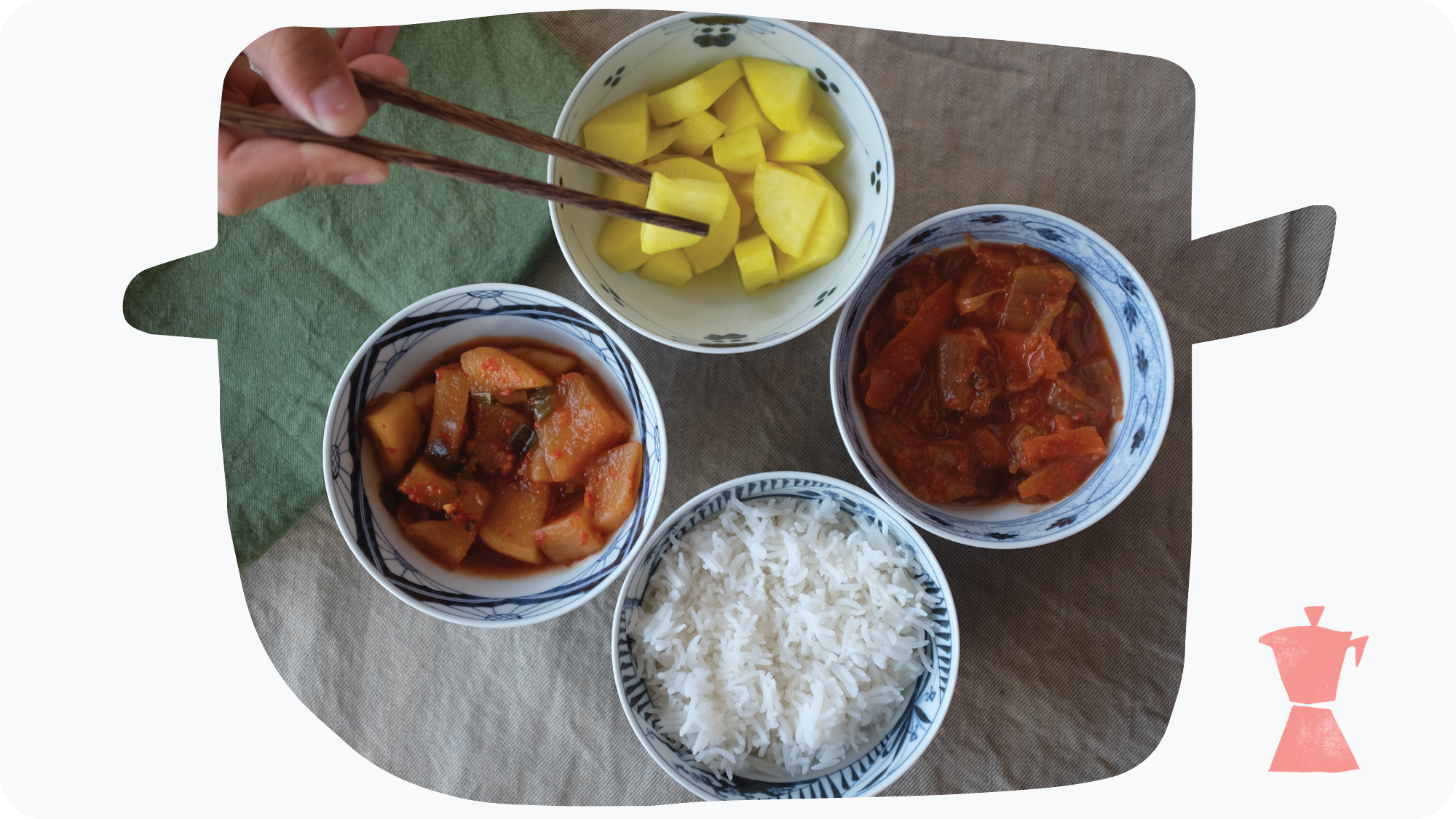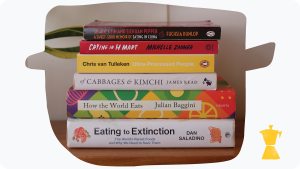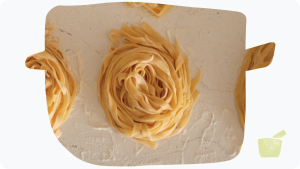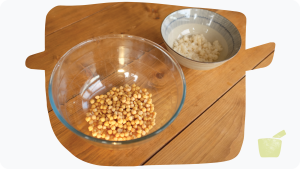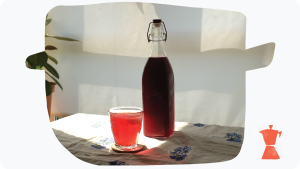The case for variety over volume: how the Korean approach to meals can save you from the drudgery of batch cooking.
We’ve all been there. In a moment of hopeless optimism, deciding that yes! I will become the sort of person who meal preps! No longer another person living alone and unfulfilled, we are transformed into a prepared, forward thinking and proactive individual who plans meals, gives up takeaway and meal deals and starts to be better! You go out, buy obscene amounts of staple food and then spend hours cooking them, stocking your fridge as though prepping for rationing.
But then you have to eat it. And meal after meal of Bolognese, or curry, or whatever easily batched meal you’ve gone all in for starts to take its toll. Rather than ushering in a new era of preparedness, dinner becomes a slog to finish what you’ve prepared, and then suddenly it’s back to takeaways and cheese on toast ruling your life. At least, that’s how it’s been for me. Every time I try to meal prep (or to be the sort of person who meal preps), I end up eating worse than before.
A change of perspective
What has changed the idea of meal prepping for me is changing how I think about a ‘meal’. As with many people in the West, I tend to think about a meal as a single ‘thing’: a main supported by a carbohydrate and maybe spliced up with a side. But through extensive archival research (watching lots of cooking videos), I started to understand that there are wildly different ways to think about food.
Early on, I came across Maangchi, Korea’s greatest food ambassador (and top contender for best dressed food personality). Her discussions of traditional Korean meals, and the idea of banchan, was key for changing the way I think about food. Banchan, often given the misleading translation “side dishes”, are the heart of a Korean meal – indeed in Maangchi’s words they are the meal. Some rice, a soup or stew, and plenty of banchan make every Korean meal different, exciting, and nutritious; something my meal prep has consistently lacked.
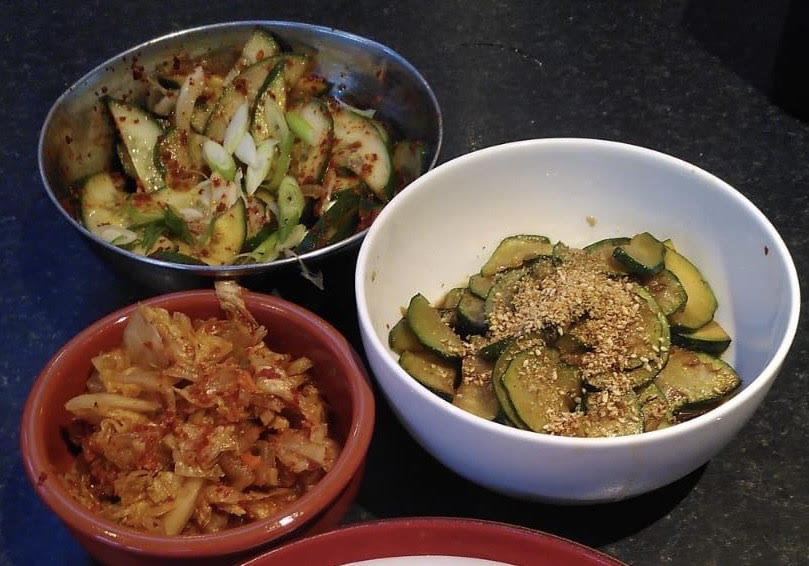
Some great examples are Maangchi’s Oi-Muchim (spicy cucumber Salad) , or her braised tofu which I always try to have the ingredients for in the fridge. A more modern take is Eric Kim’s Gochujang Aubergine, which is as easy to make as it is ‘blow your socks off’ delicious. If we play a little fast and loose with cuisines, then a miso soup, or simple Gai Lan in Oyster sauce also perfectly fit the bill as quick and delicious side dishes to add new dimensions to your meals.
The spice of life?
It’s not only Korean cooking which embraces this philosophy. Indeed, after thinking about it more, I realised that almost all traditional cuisines build variety into every meal. Whether that’s through a series of courses, or together on a single plate or table, from across the world people build multiple tastes into every meal. Ethiopian/ Eritrean meals build platters of dishes on top of the fermented flatbread injera, and Indian thali meals mix flavours and sensations on a single plate. Tapas embraces a similar philosophy: that a little bit of many things is what makes a meal delicious.
But while meals like these are wonderful, they aren’t practical to prepare for one person, or even a couple – at least not regularly. To make the array of dishes that characterises many cuisines relies on hours of work and planning, and has traditionally fallen almost entirely on women in patriarchal households and cultures. With (welcome) changes to household structures and communal family units, it ceases to be possible to have five or six dishes for every meal. When eating alone, this is amplified. Even as someone who greatly enjoys cooking, I often find it a task that needs to be done quickly and simply so I can eat a decent meal after work – variety and enjoyment are secondary to simply feeding myself.
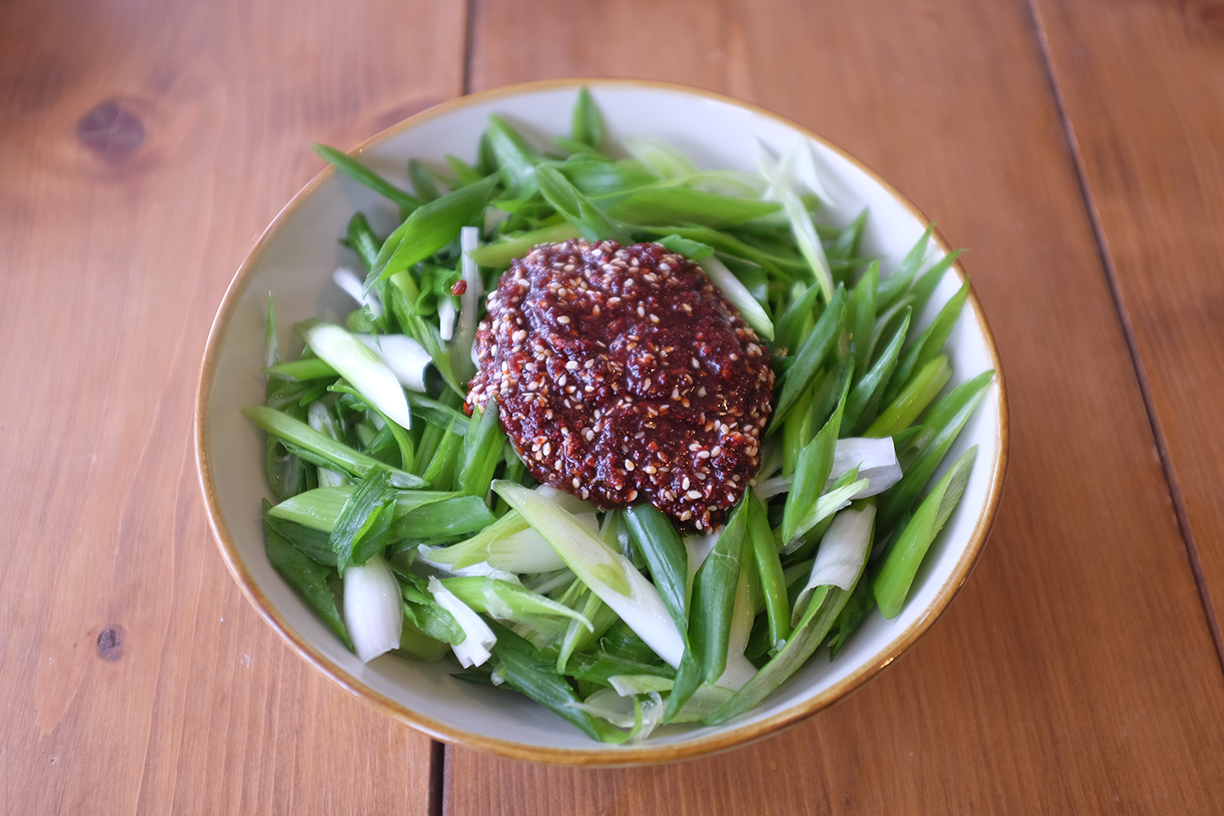
But by thinking about a meal as a collection of banchan, I can now approach this in another way. The beauty of banchan is that they are simple and quick to put together; you can often make two or three within a half hour. Alongside fresh dishes, there are a subset of mitbanchan – side dishes with a long shelf life so you can bring them out and straight onto the table. In the same amount of time as preparing a ‘main’ dish, I can prepare many ‘side’ dishes – to be eaten immediately or stored for the future.
Sideline the stockpots
Rather than the slog of traditional meal prep – three tons of Bolognese in the freezer and enough couscous to make you cry – I find myself prepping little bits every day. What was yesterday’s main, can be tomorrow’s side – by changing portions and proportions the same dishes take on different characters. And now I’ve started, this extends well beyond Korean food.
By cooking smaller quantities of quick-to-prepare food, chickpea curry or mash potato can make up side dishes for the next day. My meals now have a variety they were lacking; making bruschetta and caprese salad while your pasta is boiling is as easy as preparing any banchan.
Maybe it would make a culinary purist angry, but it makes my stomach happy and my cooking life a whole lot easier.
